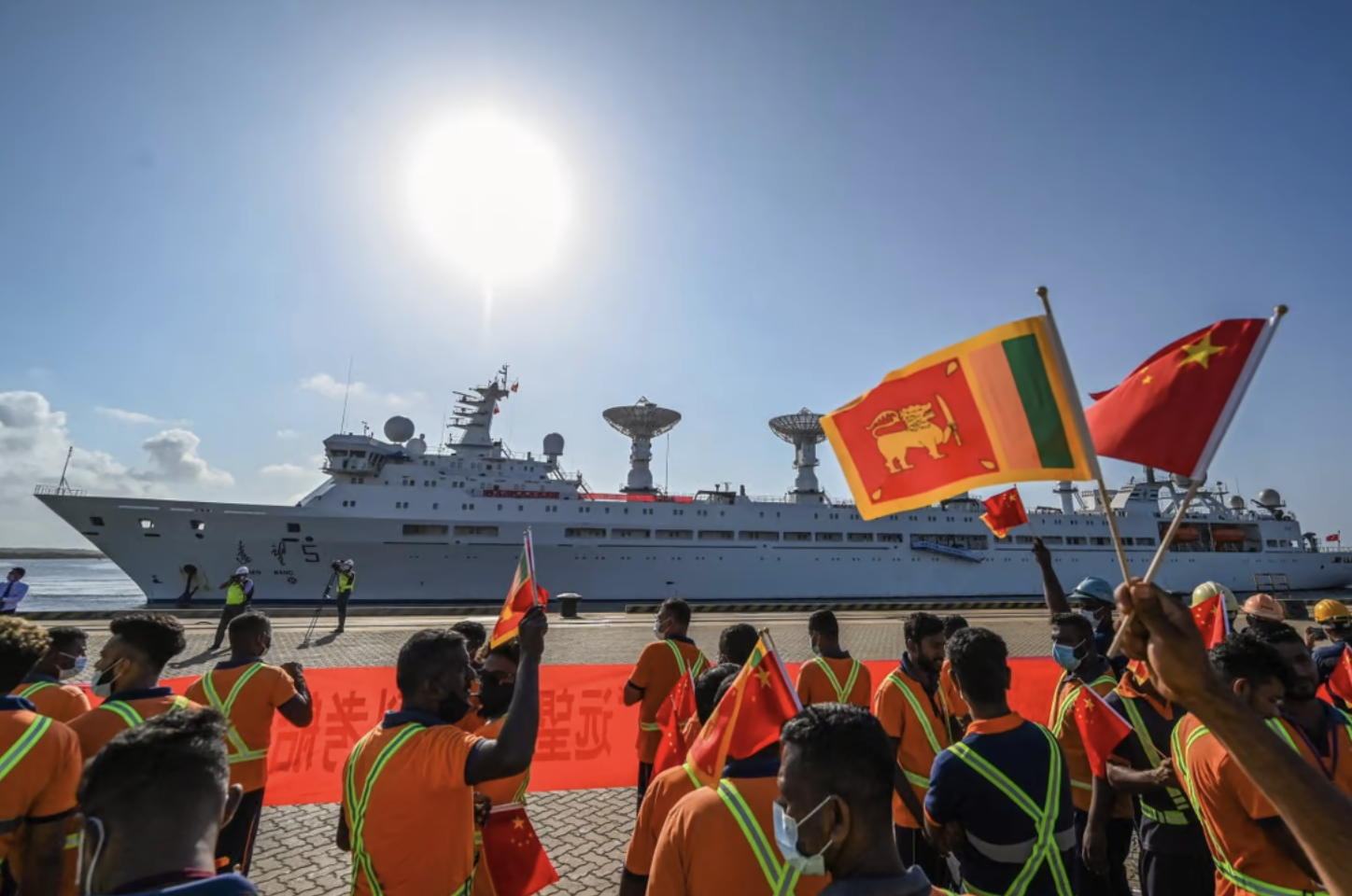Sri Lanka: China Tightens its Belt
Protesters chant anti-government slogans at a rally in Colombo, Sri Lanka, on August 6. Photo: REUTERS/Kim Kyung-Hoon/File Photo
Sri Lanka burst onto the world news circuit this Sept., as its national inflation rates skyrocketed and the country was thrust into its most severe economic crisis since 1948. There wasn’t one reason for the collapse, rather a series of highly detrimental events and decisions that built into catastrophe over the past decade, including the often overlooked aspect of unstable Chinese Communist Party (CCP) investments.
Sri Lanka’s financial woes were picking up steam back in 2019 with heavy hits to the tourism industry caused by a resurgence of terrorist attacks. The global shutdown ushered in by coronavirus further pushed the already struggling tourism sector to a complete shutdown. As the pandemic has slowed and international tourism and commerce have picked up, there has been some relief. This, however, was not nearly enough to pull Sri Lanka out of the extensive foreign debt, an estimated $51 billion upon which it defaulted on April 12.
The debt led to hyperinflation of 71 percent in September of this year, and government attempts to aid the economy, like the decision to switch Sri Lankan produce production to fully organic, proved to be costly and inadequate. The move to organic produce cut staple rice production by 20 percent within the first six months of the change. In tandem with global food shortages spurred by the Russo-Ukrainian War, these changes have further driven up cost of living and subsequent inflation.
The heart of Sri Lanka’s financial distress undoubtedly lies in poorly thought out economic policies and the relatively unstable state of general global economic structures. However, below the surface is a lesser talked about force that feeds into the maelstrom while, paradoxically, offering respite - increased CCP investment.
The standard investment structure used by the CCP and its subsidiary corporations are to offer either financial aid or direct construction assistance to smaller governments in exchange for use of and a stake in, a major infrastructure project. Nowhere is the force of CCP investment and intervention more pronounced than the port of Hambantota in the immense natural harbor Trincomalee. The CCP has long since suspected economic and strategic interests in this port with its Belt and Road Initiative (BRI), though it has never publicly included the port as part of the BRI.
The Hambantota Project first began in 2008 with the start of construction of new port facilities funded in partnership with the state-run firm China Merchants Port Holdings (CMPH). For the project, China loaned around $1.26 billion to the Sri Lankan government. By 2016, the Sri Lankan government reported losses of some $230 million with bleak projected returns that would not cover the required $100 million in yearly interest payments. The Chinese government and Sri Lanka restructured their arrangement and put a 99-year lease on the port to the Chinese government as collateral.
In the end, China gained a port with temporary and exclusive trade rights, with some exceptions, within 100 kilometers of Hambantota. The massive debt repayment obligations remained on the shoulders of Sri Lanka, but a $1.12 billion investment by CMPH was made to the Sri Lankan government.
Currently, the port is operating at lower than projected dockings. However, in August of this year, it served as a controversial refueling station for the Republic of China’s Navy (ROCN) survey ship “Yuan Wang 5”. The move sparked outrage from former Indian National Security Advisory Board Member, Brahma Chellaney, who called it “a diplomatic slap to New Delhi,” adding that “by hosting a Chinese surveillance ship at its commercial port of Hambantota, it is a stunning reminder of [India’s] receding influence in its strategic backyard.”
Preparations for a welcoming ceremony for Chinese research ship Yuan Wang 5 in Hambantota, Sri Lanka. Photo: AFP
China, in light of the financial crisis and in spite of extensive pre-existing debt, recently emerged as a possible savior to the indebted regime. Of Sri Lanka’s debt, anywhere between $6.5 and $12 billion was loaned from the Chinese government and Chinese firms. Restructuring Sri Lanka’s debt could provide some much needed respite without the grievous demands on its government.
Projects like that in Trincomalee serve as microcosms of the patterns and recent failures of Sri Lanka’s investments involving extreme foreign debt. They also serve as examples of both the growing impact of CCP foreign investment schemes in developing countries throughout the world and how Sri Lanka, in particular, has developed into a place of great importance to the CCP’s soft power projection in South Asia.


